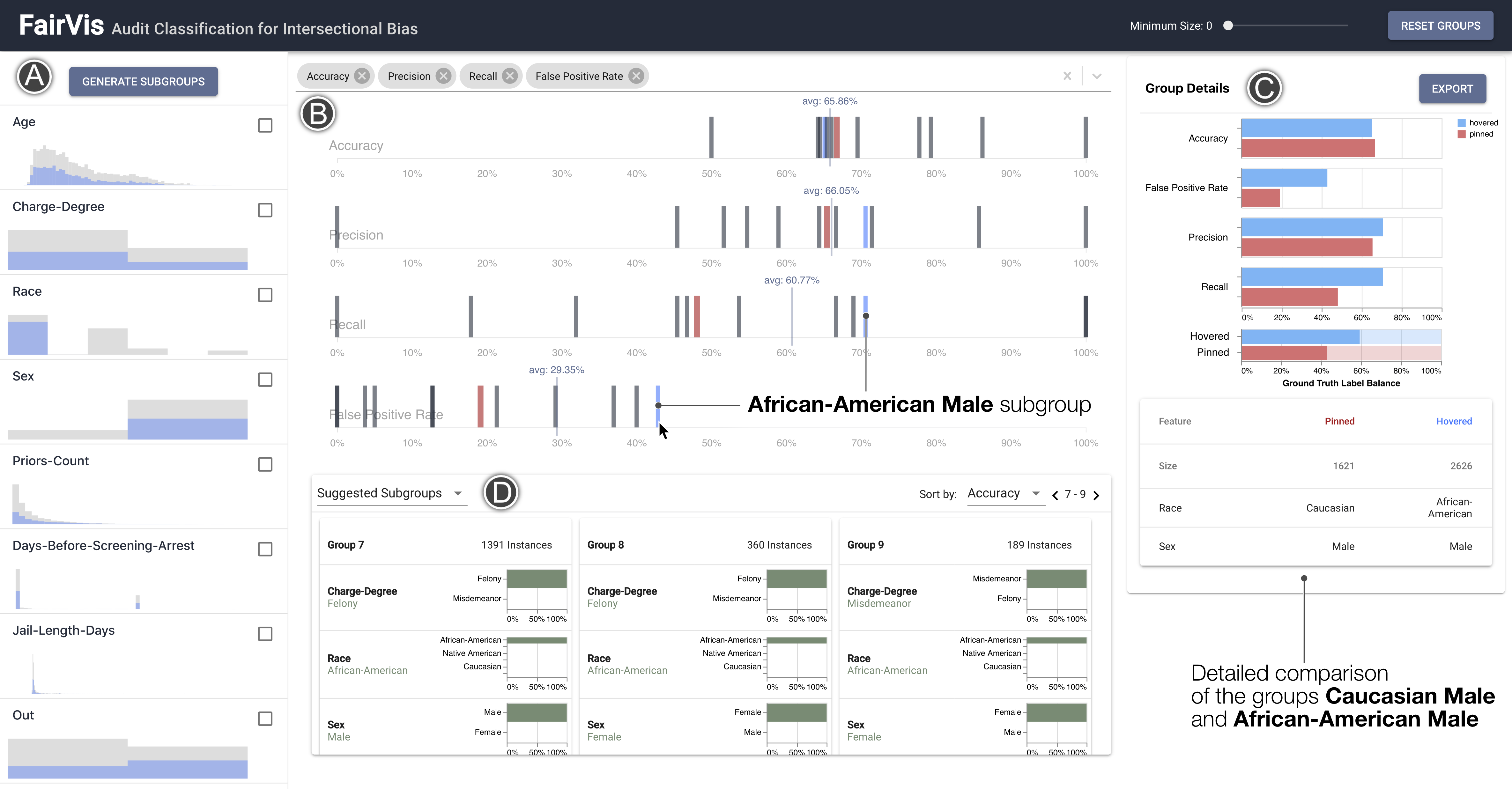FairVis: Visual Analytics for Discovering Intersectional Bias in Machine Learning
Angel Cabrera, Will Epperson, Fred Hohman, Minsuk Kahng, Jamie Morgenstern, Duen Horng (Polo) Chau

Abstract
The growing capability and accessibility of machine learning has led to its application to many real-world domains and data about people. Despite the benefits algorithmic systems may bring, models can reflect, inject, or exacerbate implicit and explicit societal biases into their outputs, disadvantaging certain demographic subgroups. Discovering which biases a machine learning model has introduced is a great challenge, due to the numerous definitions of fairness and the large number of potentially impacted subgroups. We present FairVis, a mixed-initiative visual analytics system that integrates a novel subgroup discovery technique for users to audit the fairness of machine learning models. Through FairVis, users can apply domain knowledge to generate and investigate known subgroups, and explore suggested and similar subgroups. FairVis’ coordinated views enable users to explore a high-level overview of subgroup performance and subsequently drill down into detailed investigation of specific subgroups. We show how FairVis helps to discover biases in two real datasets used in predicting income and recidivism. As a visual analytics system devoted to discovering bias in machine learning, FairVis demonstrates how interactive visualization may help data scientists and the general public understand and create more equitable algorithmic systems.
Citation
FairVis: Visual Analytics for Discovering Intersectional Bias in Machine Learning
Angel Cabrera,
Will Epperson,
Fred Hohman,
Minsuk Kahng,
Jamie Morgenstern,
Duen Horng (Polo) Chau
Discovering intersectional ML Bias through interactive visualization.
IEEE Conference on Visual Analytics Science and Technology (VAST). Vancouver, Canada, 2019.
Project
Demo
PDF
Blog
Recording
Code